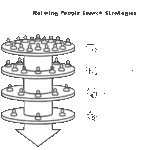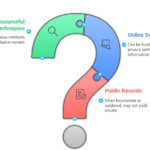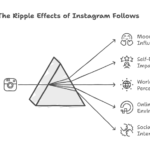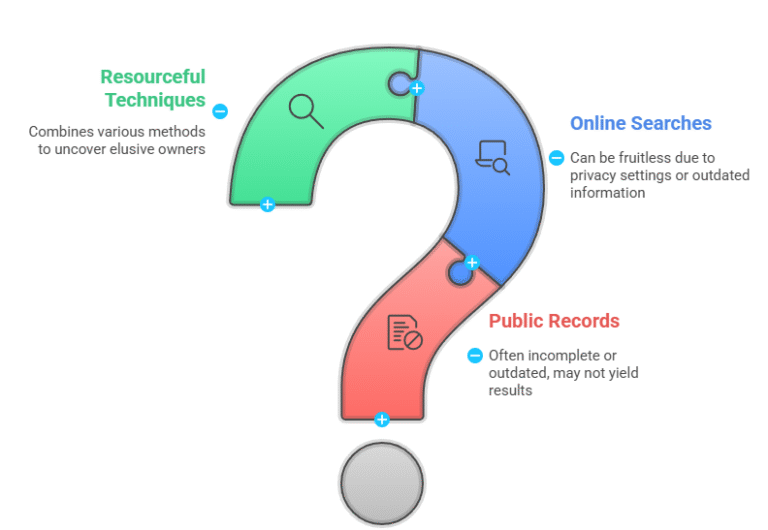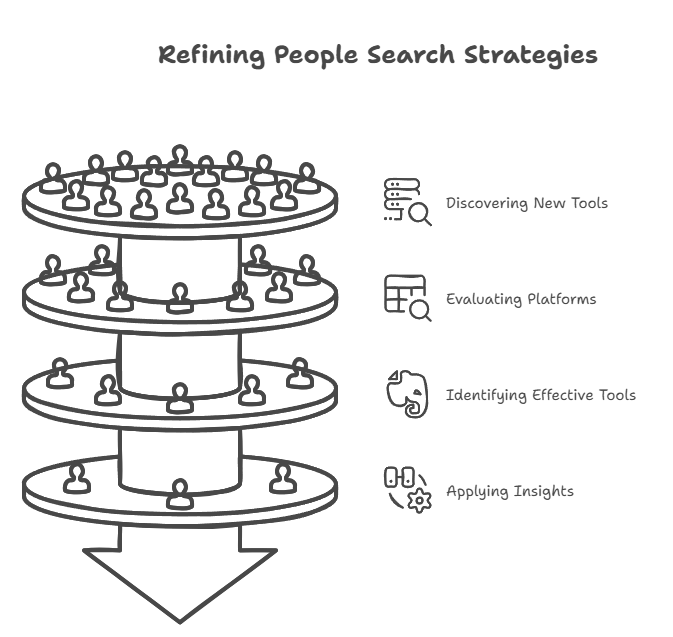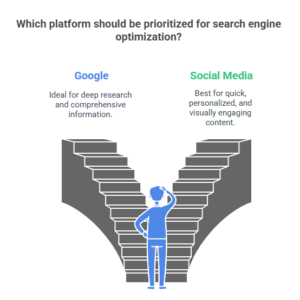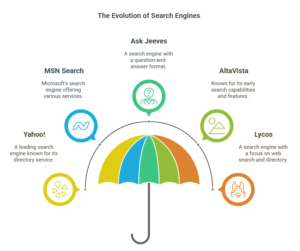
You know that feeling when you meet someone new and you’re trying to figure out what they’re into? Maybe it’s a coworker you want to connect with, or you’re planning a surprise for a friend. Whatever the reason, figuring out what makes someone tick can be tricky—but it’s way easier than you think once you know where to look.
I’ve been working in content strategy for years, which basically means I spend a lot of time figuring out what people are passionate about. Through plenty of trial and error (and yeah, some embarrassing moments), I’ve gotten pretty good at spotting the clues people leave about their interests online.
Here’s how you can do the same thing without being creepy about it.
The “Why” Behind the Search: Beyond the Obvious
Building Deeper Connections
There was this guy at work who seemed pretty reserved. Standard office small talk, nothing more. Then I noticed he’d commented on a LinkedIn post about vintage fountain pens. Turns out the guy was obsessed with them—had this whole collection, knew everything about different nibs and ink types. That one conversation completely changed our relationship. We actually became friends instead of just colleagues who nodded at each other in the hallway.
That’s the thing about discovering what people care about. You skip all the boring “how about this weather” stuff and jump straight to the good conversations. Works for networking, making friends, even dating if you’re into that.
Thoughtful Gift-Giving & Content Creation
Knowing what people are into has made me way better at giving gifts. Instead of another Amazon gift card, I can actually find something they’ll use. And for work? Understanding what my audience cares about helps me write stuff they actually want to read.
It’s all about personalization. When you can speak to someone’s specific interests, they feel like you actually get them. That’s gold, whether you’re writing marketing copy or just trying to show someone you care.
Ethical Considerations and Digital Etiquette: My Guiding Principles
Okay, before we get into the detective work, let’s talk about not being a creep. There’s definitely a right way and wrong way to do this.
Public vs. Private Information: Drawing the Line
Simple rule: if it needs a password, friend request, or special access, stay away.
Public stuff is fair game—LinkedIn profiles, public Twitter posts, blogs they’ve shared. But private messages, closed Facebook groups, anything behind a login? Don’t even think about it.
Think of it like this: you can read a poster on a bulletin board, but you wouldn’t go through someone’s desk. Same rules apply online.
The “Creep Factor” and Respectful Engagement
I learned this the hard way early on. Found out a colleague was really into this super specific hobby through some online detective work. Brought it up in conversation thinking I was being clever. The look on her face told me everything—I’d crossed a line and made her uncomfortable.
The goal is understanding people better, not stalking them. If mentioning what you found would make someone go “wait, how did you know that?” in a weird way, don’t bring it up. Better to be respectful than impressive.
Deciphering Digital Footprints: Where to Look First
Start with the obvious places. These are where people naturally share what they’re passionate about.
Social Media Profiles: More Than Just Selfies
Social media is where people hang out online, so there’s tons of good stuff here if you know how to look.
LinkedIn is great for work-related interests. Check who they follow, what groups they’re in, what they comment on. Someone who’s always engaging with posts about sustainable business practices probably cares about environmental stuff.
Instagram tells a story through pictures. Look past the photos—what accounts do they follow? What hashtags do they use? If someone’s always using #hiking or #bookstagram, that’s a pretty clear sign.
TikTok shows you what they find entertaining right now. The types of videos they share or creators they follow can tell you everything from their sense of humor to what they’re learning about.
Facebook groups are goldmines. Someone who’s active in a group about vintage motorcycles or sourdough baking is probably genuinely into those things.
Twitter/X is all about engagement. Look at who they follow, what they retweet, what hashtags they use. If they’re consistently interacting with specific topics, that’s usually a real interest.
Personal Websites & Blogs: A Digital Resume of Passion
If someone took the time to build a personal website or blog, that’s where you’ll find their real interests. These are like digital living rooms—curated to show what they actually care about.
Always check the “About” page first, then see what they write about most. The stuff people choose to spend their free time writing about is usually what they’re genuinely passionate about.
Diving Deeper: Unearthing Hidden Passions in Niche Corners
Once you’ve checked the obvious spots, it’s time to dig a little deeper. This is where you find the really interesting stuff.
Forums, Subreddits, and Online Communities: The True Habitats
Specialized forums and Reddit communities are where the real enthusiasts hang out. If someone’s actively participating in a niche photography forum or a specific subreddit about urban gardening, that’s a strong signal.
Look for quality engagement—detailed comments, helpful advice, thoughtful questions. Someone who takes time to write a long response about camera settings or plant care is probably genuinely interested.
Content Consumption Clues: What They Watch, Read, & Listen To
Public reviews and shared content can tell you a lot. Check these platforms:
- Goodreads for what they’re reading
- Letterboxd for movie tastes
- Spotify for music (if they have public playlists)
- YouTube for what videos they like or comment on
Pay attention to patterns over time, not just one-off likes.
Event Registrations & Meetup Profiles: Offline Interests Revealed Online
Public event stuff on Meetup.com or Eventbrite can show you real-world hobbies. If someone regularly goes to board game nights or photography walks, that’s a solid indicator.
LinkedIn events work too—someone who keeps going to marketing conferences or sustainability workshops probably has professional interests there.
The Art of Interpretation: Connecting the Dots
Finding clues is only half the job. The real skill is putting it all together to understand what someone actually cares about.
Pattern Recognition: Recurring Themes & Consistent Engagement
Look for patterns, not isolated incidents. If someone mentions coffee once, they might just need caffeine. But if they follow multiple coffee roasters, share articles about brewing methods, and comment on posts about coffee culture, you’ve probably found a real interest.
Consistency matters. People might like or share something once to be polite, but they only consistently engage with stuff they truly care about.
Distinguishing Passive vs. Active Interest
There’s a big difference between scrolling through content and actually participating in discussions. A simple “like” doesn’t mean much, but a detailed comment offering advice or asking good questions shows real engagement.
Active participation—writing blog posts, answering questions in forums, creating original content—is way more meaningful than passive consumption.
Leveraging What You’ve Learned: Actionable Strategies
Now that you’ve done your research, how do you actually use this information?
Starting a Conversational Bridge
The trick is bringing up shared interests naturally without revealing how you found out. Instead of “I saw on your Instagram that you like hiking,” try “I was just reading about some great hiking trails around here and wondered if you’d be interested.”
Keep it casual and give them an easy out if they don’t want to talk about it.
Personalizing Outreach & Opportunities
When you’re reaching out professionally, mentioning a relevant interest can make your message stand out. If you know someone cares about sustainable business practices, you might frame your outreach around how your project aligns with environmental goals.
Just make sure the connection feels natural, not forced.
When Not to Use the Information
Sometimes the best move is to not mention what you’ve discovered. If bringing up someone’s interest would feel intrusive or make them uncomfortable, keep it to yourself. The goal is building connections, not making people feel watched.
Common Pitfalls and How to Avoid Them: Drawing from My Experience
After doing this for years, I’ve learned to avoid some common mistakes.
Confirmation Bias: Don’t See What You Want to See
It’s easy to interpret vague information as confirmation of what you hope is true. Maybe you really want someone to share your love of vintage cars, so you read too much into one photo they posted. Don’t force connections that aren’t really there.
Stay objective and look for multiple pieces of evidence before drawing conclusions.
The “Rabbit Hole” Trap: Staying Focused
I once started researching someone’s cooking interests and somehow ended up reading about fermentation techniques for two hours. It’s easy to get distracted when you’re exploring someone’s online presence.
Set a time limit and stick to it. Have a clear goal and resist following every interesting tangent.
Over-Reliance on Single Sources
Don’t base your understanding on just one piece of information. Look for confirmation across multiple platforms. Someone might share a rock climbing photo once because they went with friends, but that doesn’t make them a climber.
Cross-reference what you find to build a complete picture.
Becoming a Digital Sleuth with Integrity
Learning to discover someone’s interests online is useful for building better relationships, both personal and professional. The key is doing it respectfully, maintaining ethical boundaries, and using what you learn to genuinely connect with others.
Remember, the goal isn’t to impress people with how much you know about them—it’s to find common ground and build meaningful connections. When you do this thoughtfully and respectfully, understanding people’s passions can open doors to relationships you never would have imagined.
Use these techniques wisely, respect people’s privacy, and always focus on building genuine connections over collecting information. That’s how you turn online research into real-world relationships.
